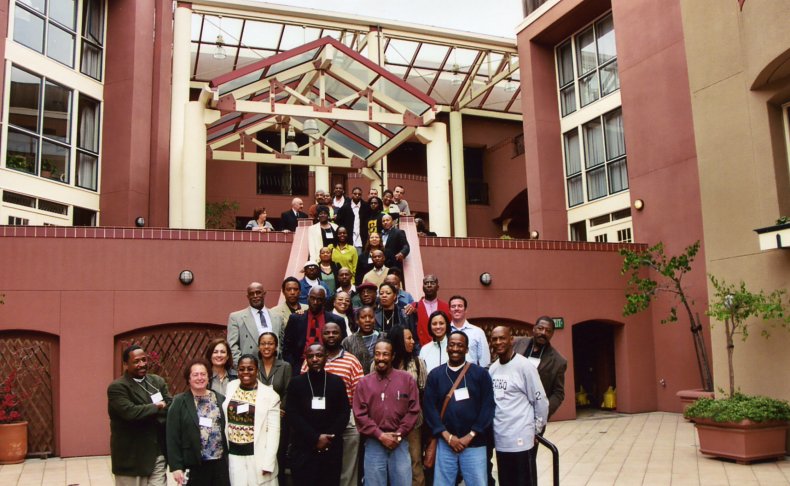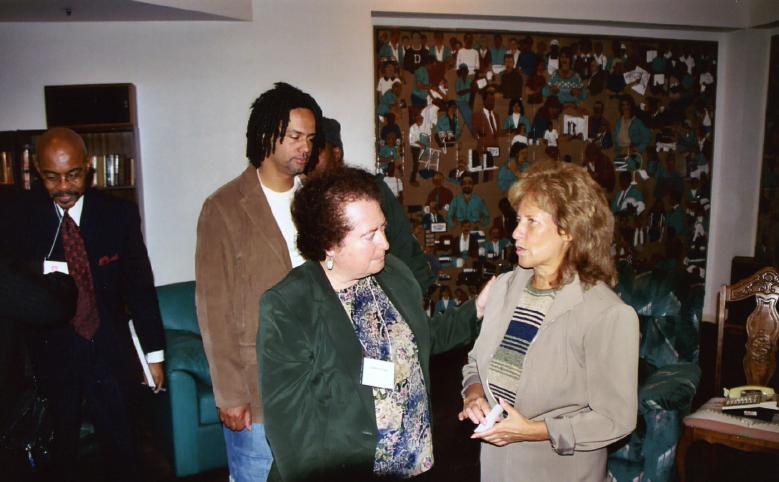

Foundation trustees, staff, event organizers, and ex-offenders at Delancey Street, where portions of the national summit were held.
Ex-Offenders Seek to Take
Life Back into Own Hands
Continued from "What's News"
Studies have shown the American criminal-justice system is biased against African Americans, Latinos and other minorities because of discriminatory drug laws and mandatory minimum sentences. There has also been a fourfold increase in the number of women in prison during the last decade. Many are serving long sentences for carrying drugs for dealers.
More than two million persons are incarcerated. The states now spend more on prison building than higher education.
Yet despite of an eightfold increase in prison cells since the late 1960s in America, the FBI violent-crime rate shows violence higher today than in the late 1960s, when the National Violence Commission was formed in response to public alarm over unacceptably high rates of violence. The American public's perceived fear of crime also is higher today than in the late 1960s.
In the 1990s, the FBI crime rate declined considerably. But even for that decade, leading analysts have concluded that most of the drop in crime was due to the strong economy, the consequent generation of jobs and opportunity, the waning of the crack cocaine epidemic of the 1980s and its consequent violence, community-based policing like that practiced in cities like San Diego and Boston, and civilian youth-development programs at the grassroots.
About 25 percent of the decline in FBI-measured crime in the 1990s has been attributed to increased incarceration. This is a significant proportion. But it hardly supports ideologues who have asserted that expensive, racially based prison building explains most of the drop in crime.

Consequently, the Delancey Street Foundation and the Eisenhower Foundation have embarked on a long-term movement to replicate and evaluate Delancey, arguably the nation's most successful model for educating, training, placing, and reintegrating previously incarcerated persons -- at no cost to the taxpayer, once Delancey principles are implemented over a development period in a new location. (For more on Delancey and its replication, please click here.)
Most federal, state, and local ex-offender "re-entry" programs fail to implement the "each one, teach one," financially self-sustaining education and employment training principles of Delancey. That public-sector failure, the Eisenhower Foundation believes, is the main reason for the today's 70 percent recidivism rate.
But a growing number of previously incarcerated persons are organizing around the country -- advocating for Delancey-like changes to create real education, remedial education, job training, and job placement.
Such investment in human capital is not unlike the need for improved education, educational financing and job training for the poor, the working class, and the middle classes in America.
This summary of the failure, racial bias, and excessive cost of prison building is based on: